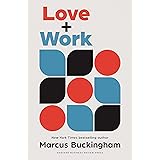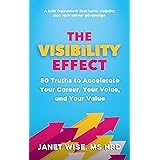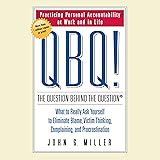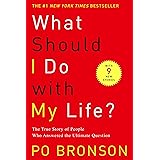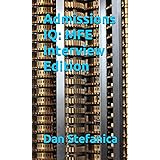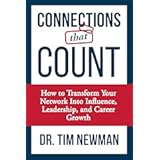Navigating the contemporary job market necessitates a significant shift from outdated strategies; therefore, mastering effective, modern job search strategies is paramount for securing desirable employment in 2025 and beyond. As illuminated in the video above by Sarah Camilo, a certified career coach with 15 years of recruitment expertise, blindly submitting numerous applications is no longer a viable approach. The landscape has evolved, demanding a more strategic, targeted, and persistent methodology. This article elaborates on the five critical strategies discussed, providing additional insights and actionable steps to optimize your job search efforts.
Cultivating Connections: The Power of Smart Networking
Networking remains an unparalleled conduit to new opportunities, yet its execution requires refinement in today’s professional milieu. “Network smarter, not harder” is a mantra that underscores the necessity of quality over quantity and strategic engagement over casual interaction. This entails maximizing every interaction and consciously building a robust professional ecosystem.
Maximizing Networking Events
Attending professional events is merely the first step; the true value lies in the depth and breadth of connections forged. Instead of connecting with a few individuals, aim to engage with approximately ten people, fostering meaningful dialogues. Furthermore, extending your presence until the event’s conclusion often yields unforeseen opportunities. Many pivotal conversations and key introductions transpire during the less formal post-event period, offering unique advantages to those who remain.
Strategic Cold Outreach and Digital Connections
Initiating cold outreach, whether through email or LinkedIn InMail, can be remarkably effective when executed thoughtfully. Targeting recruiters, hiring managers, or professionals at your desired companies is a common tactic. However, a more nuanced approach involves reaching out to individuals at a director level or higher within the target department. These senior professionals typically receive fewer direct messages, increasing the visibility of your communication. Moreover, their inherent influence within the organization can often bypass conventional application channels, significantly improving your chances of securing an interview. Emphasize personalized messages that highlight mutual interests or specific company initiatives.
Leveraging Webinars and Masterminds for Professional Growth
Webinars and masterminds serve as excellent platforms for acquiring knowledge and expanding your network. Active participation, such as engaging in chat functions, asking thoughtful questions, and directly connecting with speakers, amplifies your visibility. Critically, utilize platforms like LinkedIn, which often display a list of attendees, to follow up with relevant individuals. A simple message acknowledging a shared learning experience or a point of resonance from the session can initiate a valuable professional relationship. Persistent follow-up, even after a week, demonstrates genuine interest and can rekindle a dormant connection.
Strategic Application: Connect Before You Apply
A fundamental shift in job search methodology dictates that you should refrain from submitting applications until a direct contact within the company has been established. This approach significantly increases the likelihood of your resume being seen by the right person, circumventing the initial screening processes that often filter out qualified candidates.
Identifying and Engaging Target Companies
Commence by compiling a curated list of 10 to 15 ideal companies within your industry—organizations where you genuinely aspire to work. Subsequently, utilize LinkedIn to identify individuals within these companies, focusing on recruiters, professionals in your desired role, or even those in higher-level positions within your target department. A brief, personalized message accompanying your connection request, such as, “Hey [Name], I noticed your company is hiring for the [X role], and I’m keen to learn more about your experience there. Would you be open to connecting?” can dramatically improve acceptance rates. This initial connection humanizes the application process, setting a foundation for potential advocacy.
Leveraging Your Extended Network
Beyond digital connections, harness the power of your existing network. Share your list of target companies with friends, family, former colleagues, and mentors. Inquire if they know anyone employed at these organizations. Personal referrals remain one of the most potent avenues for bypassing applicant tracking systems (ATS) and getting directly in front of hiring managers. Such internal endorsements often carry significant weight, elevating your candidacy above the vast pool of unsolicited applications.
Boosting Your Digital Footprint: Engaging on LinkedIn Daily
Consistent engagement on LinkedIn is no longer optional; it is a critical component of a modern job search strategy. Much like targeted advertising ensures product visibility, daily interaction ensures your professional profile is consistently seen by relevant recruiters and hiring managers. LinkedIn’s algorithm heavily favors consistent engagement, rewarding active users with increased visibility.
Active Participation on Company Posts
Regularly monitor and engage with posts from your target companies and their employees. Move beyond simple “likes” and offer thoughtful, insightful comments that add value to the conversation. This continuous visibility ensures your name appears repeatedly in their feeds, fostering familiarity and recognition. Consequently, this persistent presence often leads to profile views from individuals within those companies, signalling potential interest.
Creating Original Content and Thought Leadership
Beyond commenting, strive to create at least one organic post per week. This could involve sharing your insights on industry trends, discussing key takeaways from a webinar, or even sharing a professional development experience. Posts that incorporate photos or multimedia tend to perform exceptionally well, as the LinkedIn algorithm favors visual content. Sharing personal, yet professional, experiences—like attending a book signing or an industry event—allows your network to gain a more holistic understanding of you beyond your resume, enhancing your personal brand and fostering deeper connections. This consistent effort drives profile views, inbound messages, and ultimately, job leads.
Mastering the Flawed System: Resume Optimization for Recruiters
Acknowledging that the job application process, particularly initial resume screening, is often imperfect is crucial. Recruiters, especially those new to a specific function or early in their careers, may not possess deep domain expertise in every field. Consequently, resumes must be crafted to communicate value clearly and concisely, even to a non-expert.
Translating Industry Expertise for Generalist Recruiters
The science of a compelling resume lies in its ability to translate complex industry jargon into understandable achievements for a generalist audience. If you are in finance, clearly articulate how your contributions led to cost savings or revenue generation. For sales professionals, highlight tangible achievements such as revenue growth, award recognition, or membership in elite clubs (e.g., President’s Club). In IT, where specialized technologies might be unfamiliar to recruiters, clarify the business impact of your technical skills, focusing on innovation, increased accuracy, or automation. Emphasize keywords and key performance indicators (KPIs) that resonate universally as indicators of success and impact.
Crafting Scannable and Keyword-Rich Resumes
Recruiters often skim resumes for relevant keywords and quantifiable results. Therefore, prioritize clarity, conciseness, and scannability. Employ bullet points extensively to highlight achievements, avoiding dense paragraphs. Integrate industry-specific keywords and trendy buzzwords directly from job descriptions to ensure your resume passes through initial ATS screenings. The objective is to create a document that, despite the flawed system, undeniably conveys your qualifications and impact to anyone reviewing it, regardless of their specific industry knowledge.
Expanding Horizons: Diversifying Your Job Search Beyond LinkedIn
While LinkedIn is an indispensable tool, limiting your job search to a single platform is a significant oversight. Many companies do not post all their open positions on LinkedIn, with some actively diversifying their recruitment channels to attract a broader pool of candidates or to manage costs by utilizing their internal career portals exclusively.
Exploring Niche Job Boards and Company Career Pages
Beyond general platforms, investigate industry-specific job boards such as Dice for IT professionals or SHRM for HR roles. Platforms like Built In and Glassdoor also offer robust listings. Critically, always check the career pages of your target companies directly. Companies frequently list unique opportunities or provide a more comprehensive overview of roles on their proprietary sites before or instead of posting elsewhere. Additionally, tools like Google for Jobs aggregate listings from across the web, offering a centralized and efficient search experience.
Engaging with Professional Communities and Recruiting Agencies
Participate in industry-specific Slack groups, Discord channels, or other professional online communities, as these often feature shared job openings that are not widely advertised. Furthermore, strategically partner with recruiting agencies. To maximize this avenue, research and connect with agencies that specialize in your specific industry and geographic location. Establish a proactive follow-up cadence—perhaps weekly or bi-weekly—to ensure you remain top-of-mind with your assigned recruiter. This sustained engagement prevents you from becoming just another resume in their extensive database, ensuring they prioritize your candidacy for relevant roles. By diversifying your approach, you uncover hidden opportunities and significantly broaden your reach in the competitive job market.


